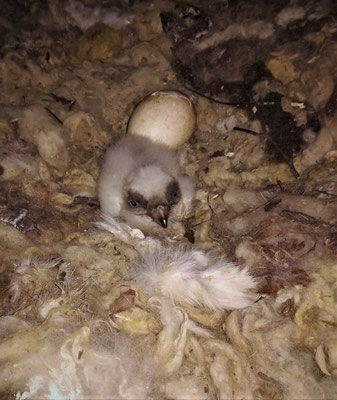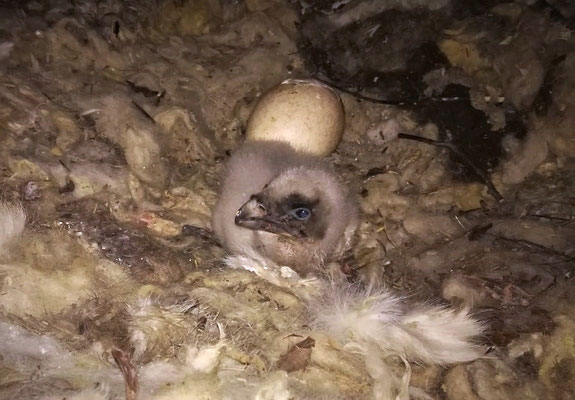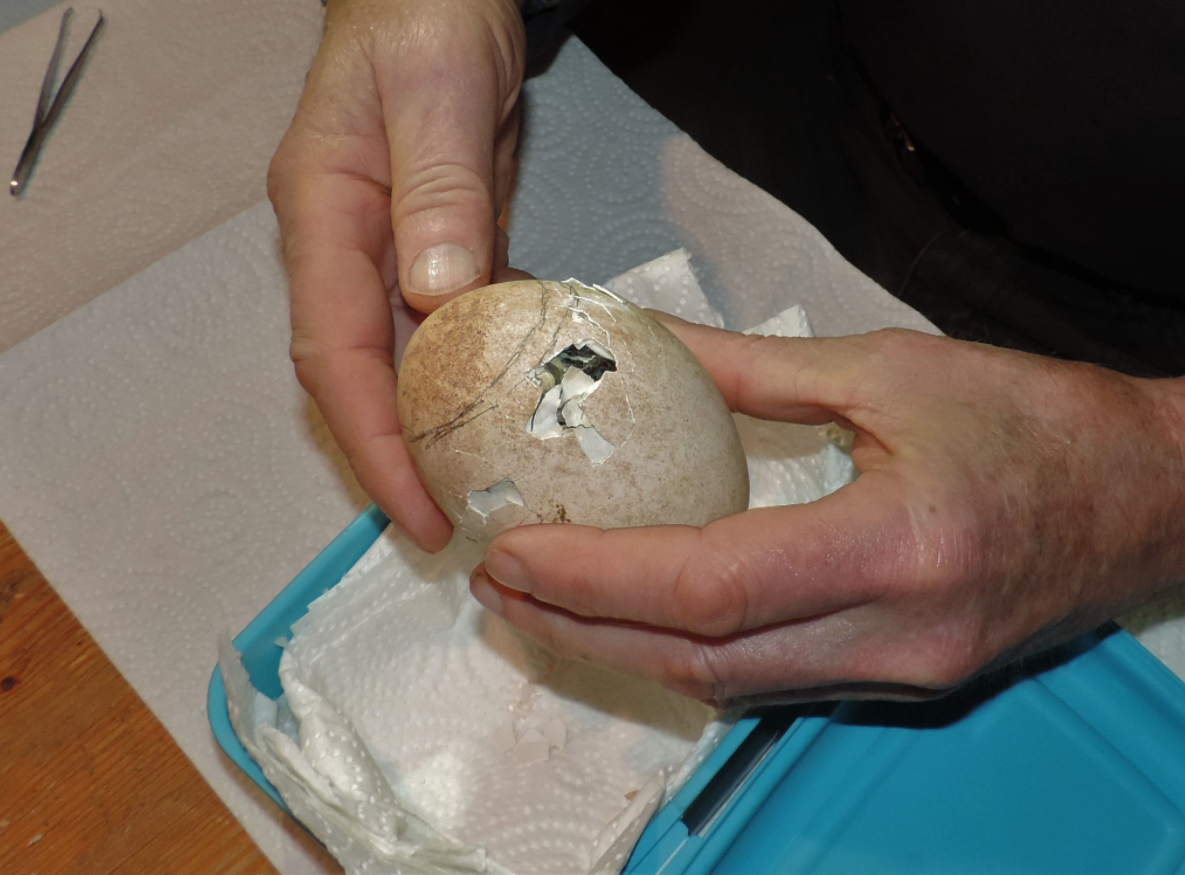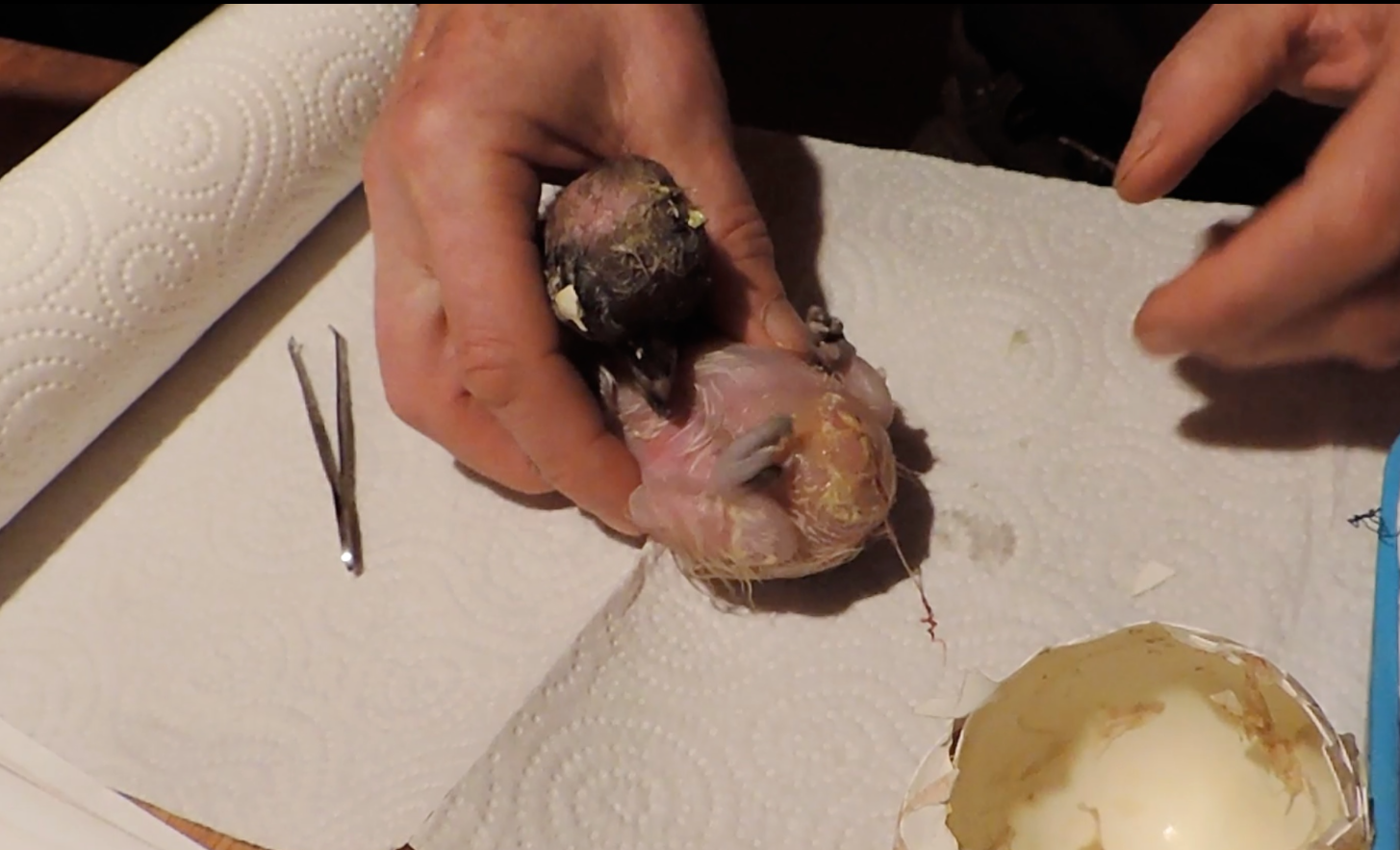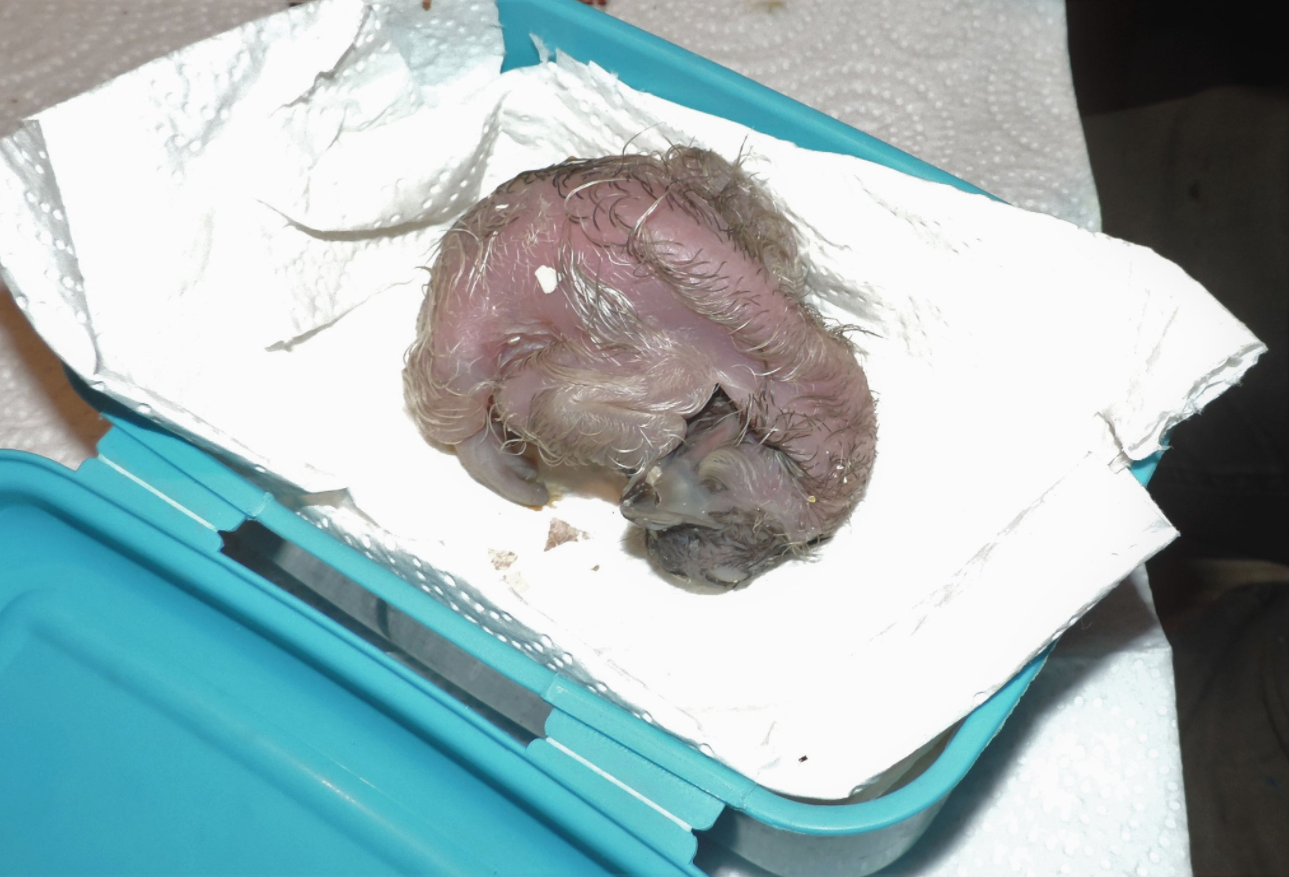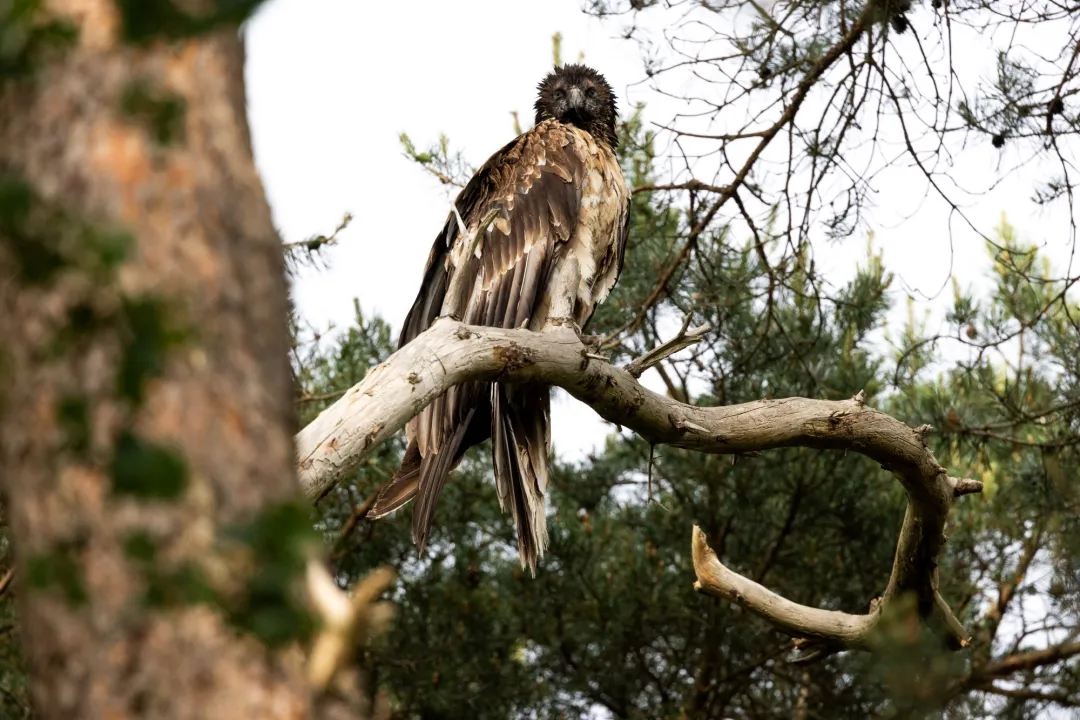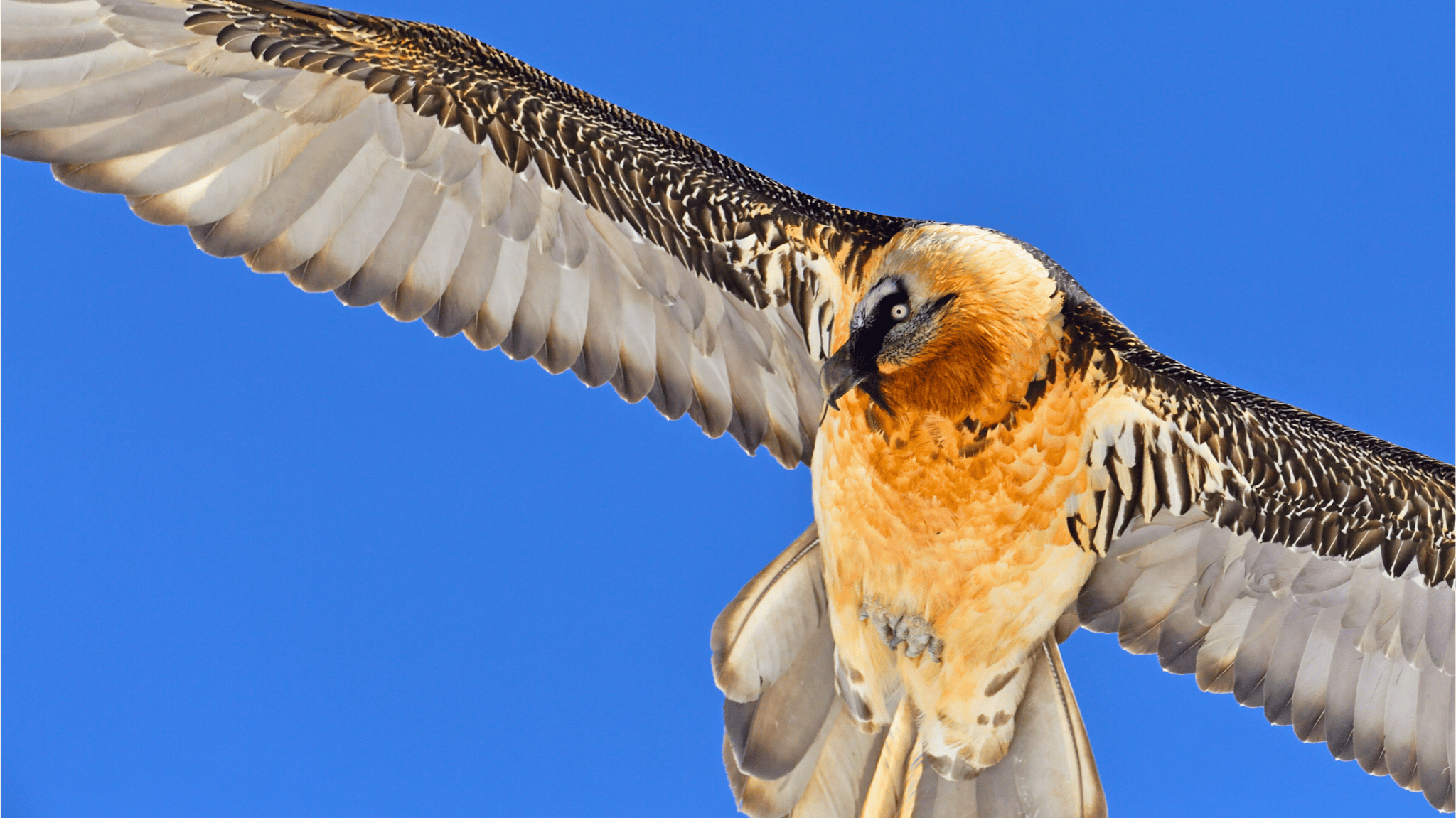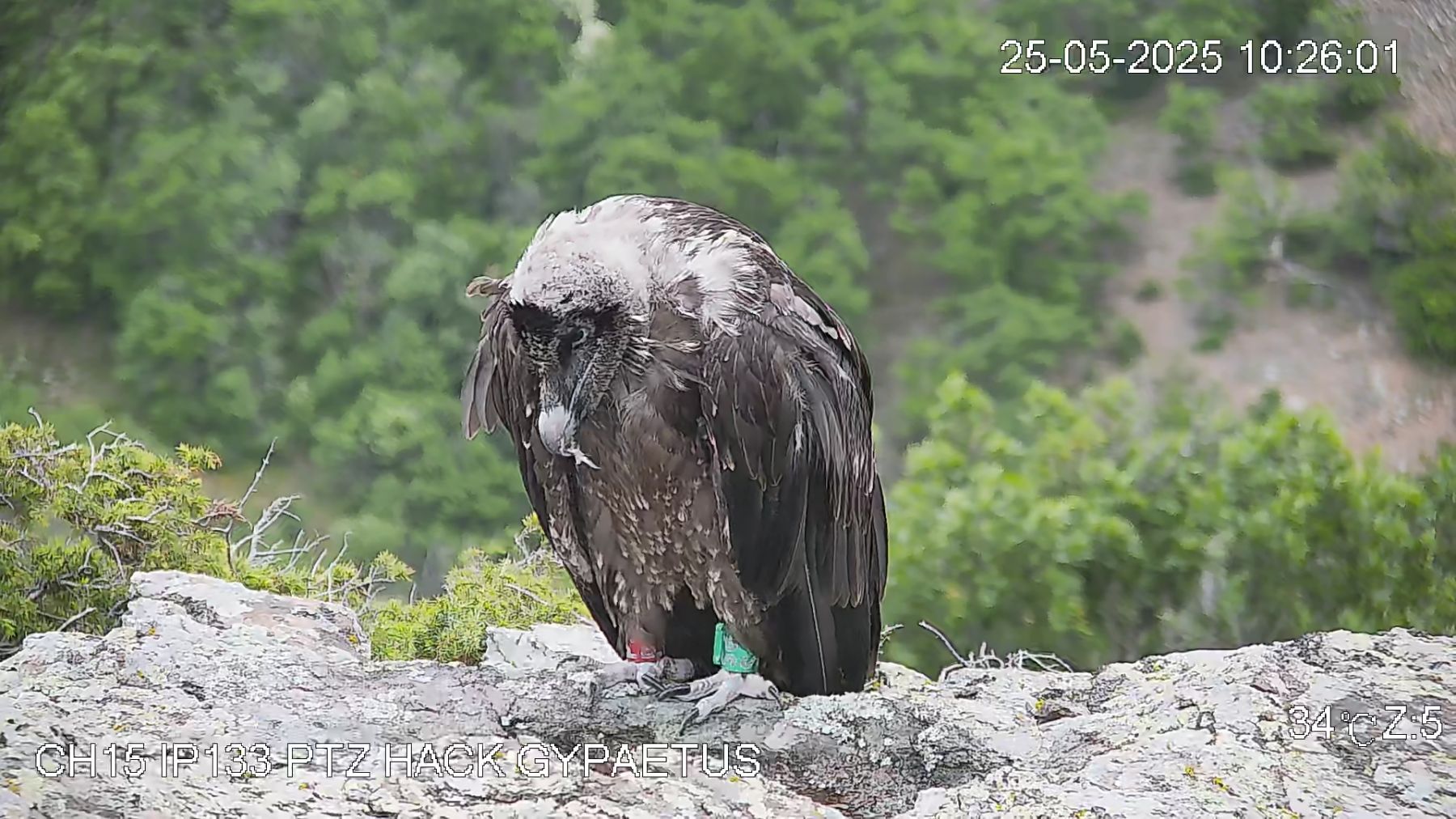
The first Bearded Vulture chick that hatched in Europe the 2020/21 breeding season has welcomed its sibling! These fluffy chicks haven’t actually met because they would kill each other, which might sound foul but it’s a common evolutionary behaviour among large raptors.
Hatching of the two Bearded Vulture siblings
About two weeks ago on 23 January, Europe’s first Bearded Vulture chick of 2021 hatched in its parents’ nest at the Richard Faust Bearded Vulture Specialised Captive Breeding Centre (RFZ) in Austria!
The chick’s dad hatched in 1989 and is a Cretan descendant while its mother hatched in 1992. Both parents had different partners in the past, but ever since they formed a pair in 2001, they have been very productive breeding birds. Fortunately, the little one is growing well and accepts food from its parents smoothly. A week after hatching, this chick already has a sibling! But the siblings haven’t met because the oldest chick would kill the youngest one due to an evolutionary behaviour called ‘Cainism’. The biological reason behind this behaviour makes sense as searching and finding food is extremely costly for parents in the wild, and there is only enough food for one chick. Therefore, the second egg acts as a biological reserve if the first egg is not fertile, the embryo dies, or the chick does not survive in the early days. Due to this behaviour, Bearded Vulture parents in captivity can only rear one chick at a time, unless the facility specializes in double adoptions. So, a few days before the second chick hatched, the manager of RFZ Hans Frey, removed the egg from the nest and placed it in an incubator until it hatched on 1 February!
Rearing of the second Bearded Vulture chick
Just after hatching, the little one weighed 153g. The human keepers raised it by hand for the first few days of its life, feeding it and monitoring its health. A few days later on 7 February, after the chick gained some weight (190g), human keepers placed it in the nest of a Bearded Vulture foster pair who immediately adopted the little one.

It is necessary for Bearded Vultures to naturally rear captive-bred chicks in order to display the same behavioural patterns as their wild conspecifics when they become adults, allowing them to survive in the wild without human help and reproduce when they reach sexual maturity. The foster pair consists of the male from Kasachstan with an amputated wing and the female hatched in RFZ in 1997 that is a daughter of the famous founder male from Crete. This pair was incubating their single egg from 3 January, which proved to be fertile and was replaced by the chick. If everything goes according to plan, the foster pair’s chick should hatch in the coming week!
Breeding Bearded Vultures for conservation purposes
Back in 1978, the Vulture Conservation Foundation (VCF) and partners united to bring the Bearded Vulture back to the Alps. To achieve this goal, pioneers established a captive-breeding programme to produce chicks and release them into the wild, with the first release taking place in 1986 at the Austrian Hohe Tauern National Park.

It took time and perseverance since Bearded Vultures only reproduce when they reach around ten years old with one chick surviving per year. Still, thanks to these efforts, the species returned to the Alps, making it one of the best wildlife comeback stories of all times! Ever since this success, more projects were launched across France and Spain. Today, the Bearded Vulture Captive Breeding Network, coordinated by the Vulture Conservation Foundation (VCF) on behalf of EAZA’s EEP, closely works with over 40 partners, including zoos, to ensure the best breeding results from the 179 birds in captivity. Every year, the VCF and partners release young captive-bred Bearded Vultures into the wild across Europe to reintroduce the species to areas where it went extinct or boost local, vulnerable populations. Up until today, a total of 343 captive-bred Bearded Vultures were freed into the wild.
Let’s hope this will be another fruitful breeding season, with many chicks hatching for their eventual release into the wild!
To follow the news of the breeding season, follow #BeardedVultureBreedingSeason on Facebook and Twitter.
